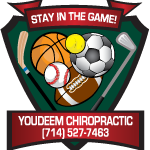The Role of Shock Wave Therapy in Injury Rehab: What You Need to Know
Introduction to Shock Wave Therapy/ StemWave Therapy
Shock wave therapy is a non-invasive treatment option that can help in the rehabilitation of injuries. It utilizes shock waves to stimulate the body’s natural healing process. This therapy can be used for various musculoskeletal conditions, such as tendon injuries and chronic inflammation. The shock waves promote blood flow to the affected area, which can help speed up the healing process.
How Shock Wave Therapy/ StemWave Therapy Works
Shock Wave Therapy uses acoustic waves to stimulate the body’s natural healing processes. These waves are directed towards the injured area, helping to increase blood flow, reduce pain, and promote tissue regeneration. The therapy can also break down calcium deposits and stimulate the growth of new blood vessels in the affected area.
Benefits of Shock Wave Therapy / StemWave Therapy in Injury Rehab
Injury rehab using shock wave therapy has several benefits. Shock wave therapy can help reduce pain, promote healing, improve blood circulation, and stimulate the growth of new tissue. It is also non-invasive, meaning there is no surgery involved. This therapy is often used to treat various conditions such as tendonitis, plantar fasciitis, and shoulder pain. Additionally, shock wave therapy sessions are usually short, lasting around 15 to 20 minutes per session, and patients often experience relief after just a few treatments.
Common Injuries Treated with Shock Wave Therapy
Shock wave therapy is commonly used to treat various injuries, such as tendonitis, plantar fasciitis, tennis elbow, and stress fractures. It is also effective in treating shoulder injuries like rotator cuff tendonitis.
What to Expect During a Shock Wave Therapy Session
During a shock wave therapy session, you can expect the following:
- You will be asked to lie down comfortably on a treatment table.
- The therapist will apply a gel to the treatment area to help the shock waves travel smoothly.
- The shock wave device will be moved over the area, delivering controlled shock waves to stimulate healing.
- You may feel some mild discomfort or tingling sensation during the therapy, but it should not be painful.
- After the session, you rarely experience soreness or redness in the treated area, but this is normal and should subside quickly.
- Multiple sessions may be required for the best results, as determined by your therapist.
Risks and Side Effects of Shock Wave Therapy
Shock wave therapy is generally considered safe, with minimal risks and side effects reported. Some patients may experience minor discomfort during the treatment, but this usually subsides quickly. It is essential to follow the treatment guidelines provided by Dr. Youdeem to minimize any potential adverse effects.
Integration of Shock Wave Therapy / StemWave Therapy into Injury Rehab Programs
Shock wave therapy is gaining popularity in injury rehabilitation programs. Integrating shock wave therapy into these programs has shown promising results in accelerating the healing process. This non-invasive treatment uses shock waves to stimulate the body’s natural healing response, promoting tissue regeneration and reducing pain. Some benefits of incorporating shock wave therapy into rehab programs include faster recovery times, improved mobility, and enhanced overall outcomes.
Success Rates and Studies on Shock Wave Therapy / StemWave Therapy
Shock wave therapy has shown promising results in treating various injuries. Studies have indicated success rates of around 70-80% for conditions like knee pain, neck and back pain, plantar fasciitis, tennis elbow, and shoulder calcific tendinitis. The therapy is non-invasive and works by sending shock waves to the affected area, promoting healing and reducing pain. Research suggests that shock wave therapy can help improve mobility and reduce discomfort, making it a viable option for injury rehabilitation.
Shock Wave Therapy vs. Traditional Treatments
Shock wave therapy and traditional treatments differ in their approach to injury rehab. Shock wave therapy is a non-invasive treatment that uses high-energy sound waves to stimulate healing in the injured area. It is known for its ability to promote tissue regeneration and reduce pain. On the other hand, traditional treatments usually involve medication, physical therapy, or surgery. While traditional treatments can be effective, they may not always address the root cause of the injury or provide long-term relief. Shock wave therapy offers a promising alternative by targeting the source of the pain and promoting natural healing processes in the body.
Conclusion and Future Developments
In conclusion, shock wave therapy has shown promising results in injury rehabilitation. It has been effective in speeding up the healing process and reducing pain for many patients. As research in this field continues to grow, there is potential for further advancements in technology and techniques. Future developments may focus on refining the therapy to make it even more efficient and accessible to a wider range of patients. Keep an eye out for updates in this field as it evolves to provide even better outcomes for injury rehabilitation.


